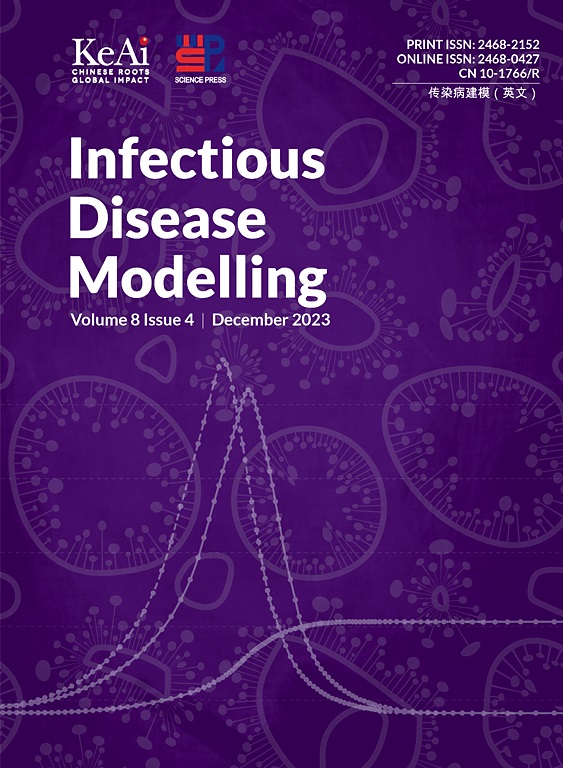Analysis of vaccination strategies in a heterosexual HPV transmission model with a case study in Xinjiang of China
IF 2.5
3区 医学
Q1 Medicine
引用次数: 0
Abstract
Vaccination has confirmed efficacy in preventing human papillomavirus (HPV) infection. The inclusion of males in vaccination programs remains a subject of debate, and the optimal allocation of vaccines across genders for maximizing benefits remains unclear. This work proposes a heterosexual HPV transmission model with vaccination and employs the data from Xinjiang of China, as a case study to assess HPV vaccination strategies. The dynamics of the model, including the nonnegativity and boundedness of solutions, the calculation of the basic reproduction number (BRN), the stability of disease-free equilibrium, and the uniform persistence of disease, are investigated. Theoretical findings highlight the decisive role of the BRN in determining model dynamics. Furthermore, the optimal vaccine distribution strategy between males and females was established when the vaccine amount is limited. Meanwhile, this work involves fitting and estimating parameters and the current BRN based on actual data regarding with HPV infection and secondary cervical cancer (CC) cases in Xinjiang from January 2009 to December 2019. The numerical simulations are employed to explore the sensitivity of model parameters, especially the vaccination rates, to the BRN and HPV infection and CC with time changes, discuss the impact of vaccine distribution between males and females on the dynamic changes in new cases of HPV infection and CC, and further analyzed the control effect of bivalent and nine-valent HPV vaccines in Xinjiang of China. Additionally, several practical strategies are introduced to manage the continued spread of HPV infection and CC in the region.
中国新疆地区异性HPV传播模型的疫苗接种策略分析
疫苗接种已证实对预防人乳头瘤病毒(HPV)感染有效。将男性纳入疫苗接种计划仍然是一个有争议的话题,为了最大限度地提高效益,跨性别疫苗的最佳分配仍然不清楚。本研究提出了一个接种HPV疫苗的异性恋HPV传播模型,并采用来自中国新疆的数据作为案例研究来评估HPV疫苗接种策略。研究了模型的动力学性质,包括解的非负性和有界性、基本繁殖数(BRN)的计算、无病平衡的稳定性和疾病的均匀持续性。理论发现强调了BRN在决定模型动力学方面的决定性作用。建立了在疫苗数量有限的情况下,男女之间的最佳疫苗分配策略。同时,根据2009年1月至2019年12月新疆地区HPV感染和继发性宫颈癌(CC)病例的实际数据,拟合参数并估计当前BRN。通过数值模拟,探讨模型参数特别是疫苗接种率对BRN、HPV感染和CC随时间变化的敏感性,探讨男女疫苗分布对新发HPV感染和CC动态变化的影响,并进一步分析新疆地区二价和九价HPV疫苗的控制效果。此外,还介绍了一些实用战略,以控制HPV感染和CC在该区域的持续传播。
本文章由计算机程序翻译,如有差异,请以英文原文为准。
求助全文
约1分钟内获得全文
求助全文
来源期刊

Infectious Disease Modelling
Mathematics-Applied Mathematics
CiteScore
17.00
自引率
3.40%
发文量
73
审稿时长
17 weeks
期刊介绍:
Infectious Disease Modelling is an open access journal that undergoes peer-review. Its main objective is to facilitate research that combines mathematical modelling, retrieval and analysis of infection disease data, and public health decision support. The journal actively encourages original research that improves this interface, as well as review articles that highlight innovative methodologies relevant to data collection, informatics, and policy making in the field of public health.
 求助内容:
求助内容: 应助结果提醒方式:
应助结果提醒方式:


